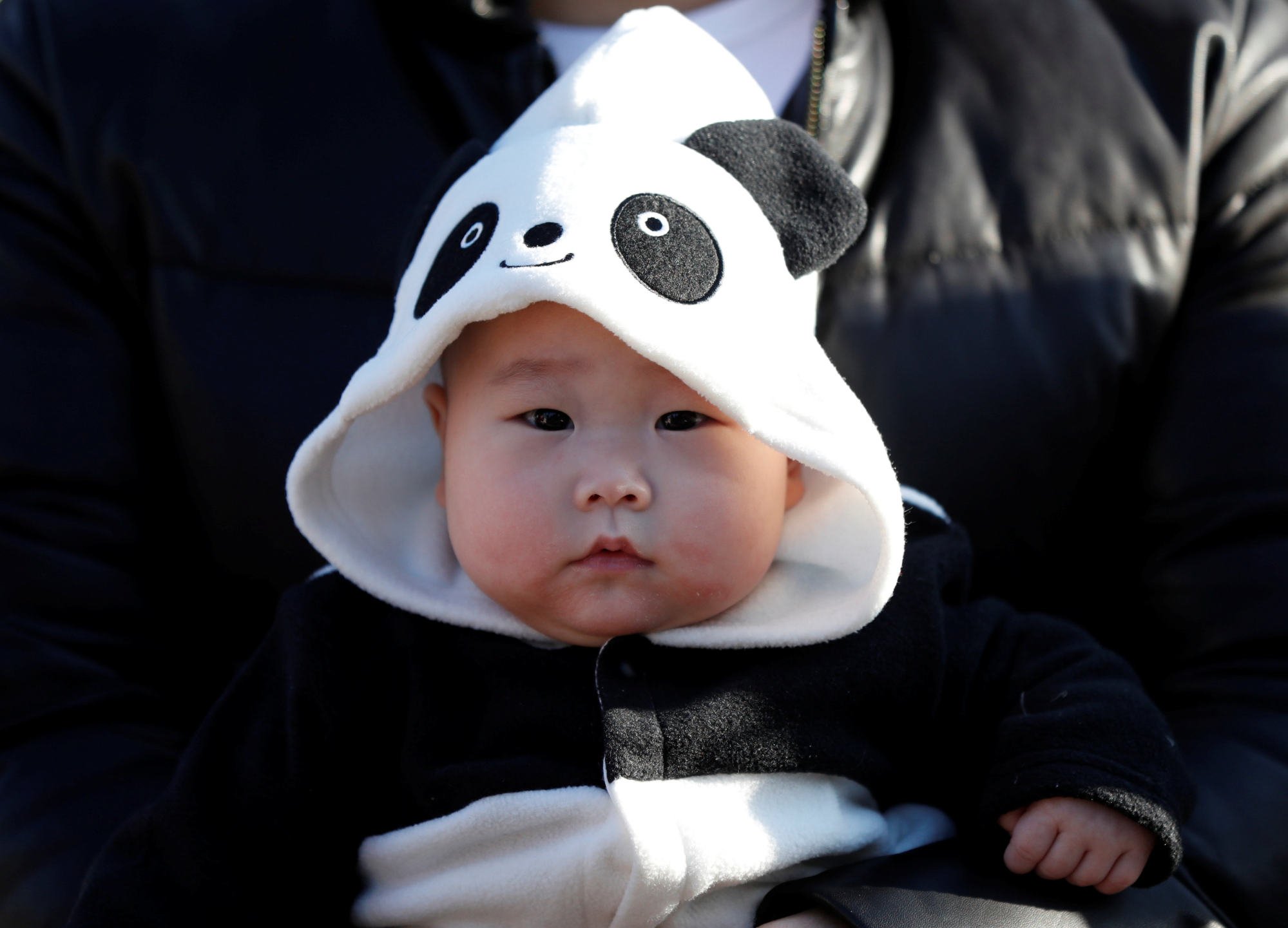The average cost of medical care associated with having a baby could range between 503,000 yen (US$3,233) and 605,000 yen in Japan, according to some estimates.
“That would be huge for us because we want at least two children and probably three,” said Jun Shigeno. “I have two brothers and that is a large family in Japan, but that’s what I want for my family as well. If the government can make having a baby free, then that will make having a third child much easier for us.”
He told This Week in Asia that his friends who are getting married and planning to have children worry most about the cost of living.
“I know there will be even greater pressure on me when we have children as Nagisa will probably leave her job, which puts more pressure on me. Anything the government can do to help will be important to us.”

Japan’s shrinking population is fast becoming a crisis. Statistics released by the health ministry on Wednesday show that the nation’s fertility rate – the average number of children born to a woman – fell to a record low of 1.20 in 2023 from 1.26 in 2022, a decline for an eighth consecutive year.
In Tokyo, the rate dropped to 0.99, below the threshold of one for the first time.
The number of babies born in the country last year fell by 43,482 to a record low of 727,277. Based on the natural population decline, or the number of deaths minus total births, the population shrank by a record 848,659.
Speaking on the reforms to help parents in March, Masanobu Ogura, the minister of state in charge of child policy, said: “The next six to seven years will be Japan’s final opportunity to reverse the downward trend in births.”
Under the government plan, monthly health insurance premiums will increase by an average of 250 yen in the 2026 financial year to raise 600 billion yen for the new population-related initiatives. Premiums will have to be raised again to meet a target of 800 billion yen in 2026 and 1 trillion yen in 2028.
The main component of the plan is the higher child allowance, with income restrictions removed and the period for claims extended. The allowance will be doubled to 30,000 yen for a third child and subsequent children.
From April next year, expectant mothers will receive a payment of 100,000 yen while new parents will receive 100 per cent of their take-home monthly pay for up to four months of maternity or paternity leave, up from 80 per cent previously.
Daycare facilities will be expanded while companies providing benefits for staff who have children can get support from the government.
Japan is not alone in facing the challenges of low birth rates and an ageing population. Other advanced economies have also introduced measures similar to that in Japan to reverse the trend even as budgets are coming under strain to pay for childcare and pensions.
Finland has introduced a one-time €10,000 (US$10,888) gift for every newborn child while Estonia has raised monthly child support payments to €520 for a family with three children. Australia’s “baby bonus” has been credited with stabilising the country’s birth rate.
The country facing the most acute population crisis is South Korea where the fertility rate sank to 0.72 earlier this year. To encourage couples to raise children, the Korean government has offered 2 million won (US$1,465) for a first child, 3 million won for each additional child, a monthly allowance of 1 million won and other incentives.
While couples appreciate the financial incentives for childbirth, they also desire a better quality of life in a less competitive society, according to analysts.

Sumie Kawakami, a lecturer at Yamanashi Gakuin University and author of a book on gender issues, said using such incentives to entice couples to have children was unsustainable even though the short-term measure could help couples cope with the cost of living.
“The long-term effect seems very unclear. This may produce a bump in the number of children being born for a couple of years, but we still have the underlying problems of rising prices, more spending on healthcare for the elderly, pensions and so on,” Kawakami said.
State financing for child support places a huge burden on Japan’s finances given that it had a high national debt at 250 per cent of GDP as of 2023, according to Kawakami.
“The younger generations of Japanese must eventually bear the burden of repaying that debt and that means that taxes will have to be higher.”
One key area that the Japanese government should also tackle to alleviate the population crisis is to introduce measures to raise wages, particularly for younger working adults, Kawakami said.
“If they have a greater income, they make decisions on getting married, having children and so on. The government is looking for a quick fix to the problem with more and more subsidies but the real problem is low wages.”


